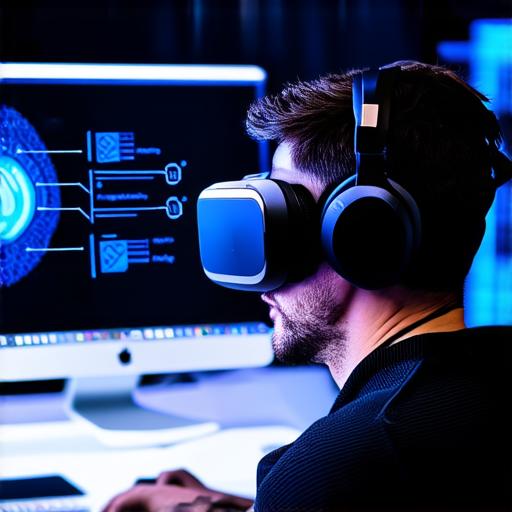Motion Sickness: What Is It?
Motion sickness is a feeling of nausea, dizziness, or headache that occurs when the brain receives conflicting information about movement. This can happen when a person is moving on the ground while looking at a stationary object or vice versa, such as reading a book in a car or watching a movie on a plane. In VR, motion sickness can occur when the user’s eyes and body are not synchronized, leading to discomfort and sometimes even nausea.
Causes of Motion Sickness in Virtual Reality

There are several reasons why motion sickness can occur in virtual reality. Firstly, the technology used to create VR experiences can be quite immersive, which means that users may feel like they are really moving when they’re not. For example, a user may be sitting on a couch while using a VR headset, but they may still feel like they’re flying through space or exploring ancient ruins in Egypt.
Secondly, the lack of depth perception and context can cause confusion for the brain, which can lead to motion sickness. When users look around in VR, their eyes are only seeing a two-dimensional image, which can be disorienting. Additionally, the lack of real-world context can make it difficult for users to determine where they are in space and how much they’re moving, leading to a sense of disorientation and potentially causing motion sickness.
Thirdly, the high level of interaction required in VR experiences can also contribute to motion sickness. For example, when a user is playing a first-person shooter game, their body may be stationary while their eyes are constantly darting around, trying to track moving targets. This can cause confusion and discomfort, which can lead to motion sickness.
Mitigating Motion Sickness in VR
There are several things that developers can do to mitigate motion sickness in VR experiences. Firstly, they can provide users with clear visual cues to help them orient themselves in the virtual world. For example, providing a compass or other reference points can help users understand where they are in space and how much they’re moving, which can reduce the likelihood of motion sickness.
Secondly, developers can use techniques like smooth interpolation and predictive rendering to create smoother VR experiences that are less disorienting. Smooth interpolation involves gradually transitioning between different parts of a virtual environment, rather than abruptly changing them. Predictive rendering involves anticipating where the user will look next and loading the appropriate graphics in advance, which can help reduce lag and smooth out the experience.
Thirdly, developers can provide users with control over their VR experience, such as adjusting the speed or direction of motion. This can help users feel more in control and less disoriented, which can reduce the likelihood of motion sickness.
Real-Life Examples
One real-life example of how VR technology can cause motion sickness is the use of 360-degree cameras for virtual tours of museums or historical sites. While these experiences can be fascinating, users may experience motion sickness due to the high level of interaction required and the lack of depth perception in the two-dimensional images.
Another example is the use of VR in medical training. For example, surgeons may use VR to practice complex procedures, but if the graphics are not smooth or the perspective is disorienting, it could cause motion sickness and make the training less effective.
Conclusion
Virtual reality technology has the potential to revolutionize many industries, from gaming to healthcare. However, developers must be mindful of the potential for motion sickness and take steps to mitigate its effects. By providing clear visual cues, using smooth interpolation and predictive rendering, and giving users control over their experience, developers can create VR experiences that are enjoyable and effective without causing discomfort or nausea. As virtual reality technology continues to evolve, it will be important for developers to stay up-to-date with the latest techniques and best practices to ensure a positive user experience.
